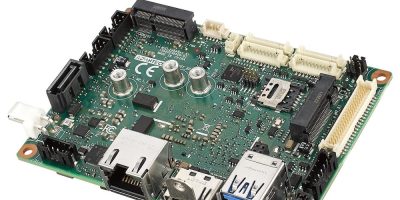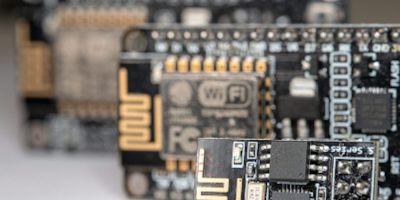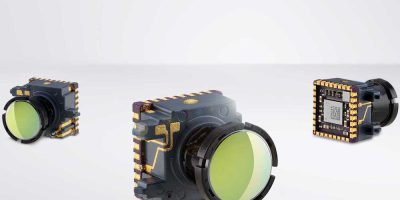Advantech’s range of embedded single board computers (ESBCs) are now equipped with 13th generation Intel Core processors, Intel Core mobile processors and Intel Processor N series. These new processors will bring significant performance enhancements to the SBCs, said Advantech. They are suitable for use in smart factories, machine automation, machine vision, transportation, medical, retail, and edge AI applications.
Intel’s latest processors will be integrated into three products across 2.5-inch (pico-ITX) 3.5-inch and four-inch ESBCs and launches from Q3 2023 to Q1 2024. This will improve application efficiency in intelligent factories, retail, healthcare, and energy management, said Advantech.
The new processors will increase single-thread performance by up to 1.04x, multi-thread performance by up to 1.34x, and CPU image classification inferencing performance by up to 1.25x compared to 12th Gen Intel Core processors.
The MIO-2364 2.5-inch Pico-ITX SBC will be equipped with the Intel Processor N-series. It has dual independent display (LVDS and HDMI), GbE (optional PoE/PD, 802.3at), four USB, a COM, and SMBus / I2C ports, with M.2 E-Key and M.2 B-Key expansion options. It supports iManager and software APIs and WISE-DeviceOn.
The MIO-5377R will feature the 13th Gen Intel Core processor with up to 14 cores and TDP of 28/15W. It has four simultaneous displays: LVDS / HDMI / DP / USB-C and two LAN, eight USB (including one USB4), four UART, two CANBus and three I2C ports. There are also M.2 E-Key, B-Key and M-Key (which supports NVMe) options. The SBC supports Windows 10 LTSC and Ubuntu 22.04 LTS, embedded software APIs and WISE-DeviceOn.
The third SBC is the MIO-4370, a four-inch ESBC which will feature the 13th Gen Intel Core processor. This model is scalable with socket type CPU (LGA1700) and support for a standard CPU cooler. It has DDR5 4800 up to 32Gbyte and three simultaneous displays (dual HDMI+eDP). There is also dual high speed 2.5G Ethernet with TSN, two COM, CANbus and TPM and three expansion options of dual M.2 M-Key (with support for NVMe) and M.2 E-Key. This ESBC also supports Windows 10 LTSC & Ubuntu 22.04 LTS, embedded software APIs and WISE-DeviceOn.
Latest News
Embeddable database streamlines and analyses MCU data in milliseconds
Real-time secure embedded data management software provider, ITTIA, has launched its latest database, ITTIA DB IoT 8.8 for microcontrollers, microprocessors and electronic control units. The databased streams, analyses and gains insight in real time to microcontroller data in milliseconds to advance edge computing for IoT devices, said the company.
As part of the ITTIA DB embeddable database family, ITTIA DB IoT brings advanced database and stream processing capabilities to microcontroller devices.
With this new release, microcontroller applications embedded with ITTIA DB are capable of ingesting and aggregating data, detecting anomalies, storing information, and making choices in milliseconds. OEMs building gateway devices, industrial systems, software-defined vehicle applications, medical devices, wearables, and other embedded products can seamlessly embed ITTIA DB to locally monitor, store, and manage data in real time.
ITTIA DB IoT can be embedded into Arm Cortex-A, Cortex-M, and Cortex-R architecture devices, different RTOS platform variants, and can be easily ported to support custom environments.
ITTIA DB IoT’s architecture offers mix-and-match customisation so embedded developers may select to stream real time data, manage time series, and/or store table data.
Real time data capture and edge analytics are becoming common requirements for edge devices. As microcontroller technology advances, some OEMs seek to first process real-time data, interpret it and then store it while others prefer to store the entire data while footprint and performance play an important role in their design. ITTIA DB IoT 8.8 serves both schools of design. By incorporating ITTIA DB, a microcontroller can transform into a real time data processing platform that responds to event-driven data, as well as support applications that prefer to store the entire data into tables.
Embedded, edge IoT and AI systems demand devices to process data at a massive scale to achieve measurable metrics. ITTIA DB IoT 8.8 streaming and time series functionalities address this kind of demand. OEMs can build applications that respond immediately to events, craft materialised views over streams, and receive real time data from the current state on demand. Time series data ingestion, transformation, analytics, and distribution make microcontrollers compatible with today’s computing world, added ITTIA.
ITTIA software development lifecycle (SDL) conforms to the principles of IEC/ISO 62443.
Infineon goes beyond standard Wi-Fi with lates AIROC device
The latest addition to Infineon Technologies’ AIROC portfolio is the Airoc CYW5551x. This single device combines Wi-Fi 6 / 6E performance and advanced Bluetooth connectivity, making it suitable for a host of IoT applications.
The AIROC CYW5551x Wi-Fi 6/6E and Bluetooth 5.4 family delivers secured, reliable 1×1 Wi-Fi 6 / 6E (802.11ax) connectivity that goes beyond the standard, said Infineon. This is combined with advanced low power Bluetooth connectivity. The optimised CYW55512 is a dual-band Wi-Fi 6 solution and the CYW55513 is a tri-band Wi-Fi 6 / 6E device. Both feature power-efficient designs that are suitable for use in smart homes, industrial applications, wearable devices and equipment and other small factor IoT applications, said the company.
“Infineon’s new CYW5551x family brings the range, reliability, and network robustness from our 2×2 Wi-Fi 6/6E CYW5557x family of devices to an IoT optimised family,” said Sivaram Trikutam, vice president of Wi-Fi Products of Infineon. “As part of the company’s digitalisation and decarbonisation strategy, this family is optimised for very low power consumption, making it ideal for battery-operated devices like wearables and IP cameras,” he said. They are also tuned for best performance across a wide temperature range, enabling them to serve industrial and infrastructure applications such as electric vehicle charging and solar panel controls, logistics.
The AIROC CYW551x family offers support for the 6GHz band for Wi-Fi 6E, delivering lower latency and reduced interference. Bluetooth 5.4 low energy (LE) with Audio is range and power optimised with up to 20dBm transmit power.
Other features include improved multi-layer security (PSA Level 1-certifiable) and design versatility supported by a wide ecosystem of module and platform partners.
The devices feature Linux, RTOS and Android support, and have a fully validated Bluetooth stack and sample code to accelerate development time.
Infineon’s AIROC CYW55512 and CYW55513 are sampling now. The CYW5512 will be commercially available in March 2024, and the CYW55513 will be commercially available in June 2024.
Micro-thermal camera module adds wide angle to Lepton camera series
Claimed to be the world’s first micro-thermal camera module with a wide 160 degree field of view (FoV), the Lepton UW is small enough to fit on the tip of a finger. Introduced by Teledyne FLIR, part of Teledyne Technologies, the wide module can be used for fire detection, process monitoring, and people counting.
The Lepton UW features a usable 120 x 120 thermal resolution and a scene dynamic range of up to 400 degrees C. It also features thermal sensitivity of less than 50mK and the same integrated digital thermal image signal processing capabilities used in other Lepton microthermal camera modules.
“Offering the ultra-wide field of view in such a compact package will enable smart building system integrators to utilise thermal data within more affordable systems and simplify deployment,” said Mike Walters, vice president, product management, Teledyne FLIR. “Developers can also leverage the Teledyne FLIR
technical service team for assistance along with online resources – from source codes to licenses, to speed the development process,” he added.
For people counting, Lepton UW provides a dataset that is not susceptible to overcounting through glass while also maintaining personal privacy. When combined with building automation software, the Lepton UW can help facility managers better optimize and automate energy usage, occupant comfort, and workspace management, said Teledyne FLIR.
Integrators can leverage the online Lepton integration toolbox with application
notes and source code for testing on Windows, Linux, Raspberry Pi, and BeagleBone. The company’s technical services team is also available to support customer licensing of the MyFLIR application software, MSX, and Vivid-IR to maximise performance and reduce technical risk.
Founded in 1978, Teledyne FLIR, a Teledyne Technologies company, specialises in intelligent sensing solutions for defence and industrial applications.
Teledyne Technologies specialises in digital imaging products and software,
instrumentation, aerospace and defence electronics, and engineered systems. Teledyne’s operations are primarily located in the United States, the United Kingdom, Canada, and Western and Northern Europe.
About Smart Cities
This news story is brought to you by smartcitieselectronics.com, the specialist site dedicated to delivering information about what’s new in the Smart City Electronics industry, with daily news updates, new products and industry news. To stay up-to-date, register to receive our weekly newsletters and keep yourself informed on the latest technology news and new products from around the globe. Simply click this link to register here: Smart Cities Registration







